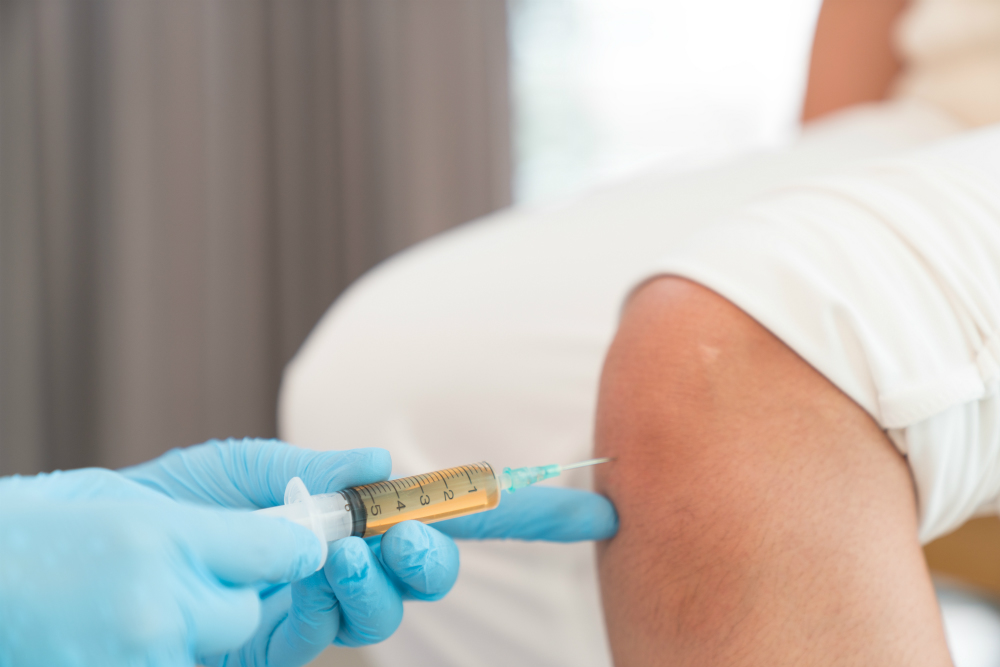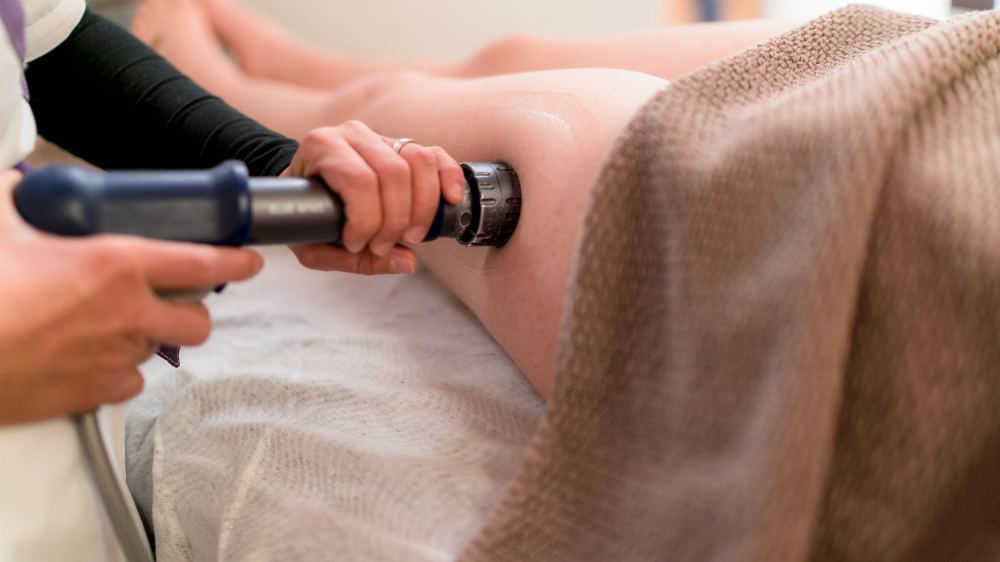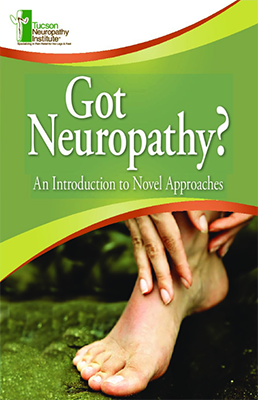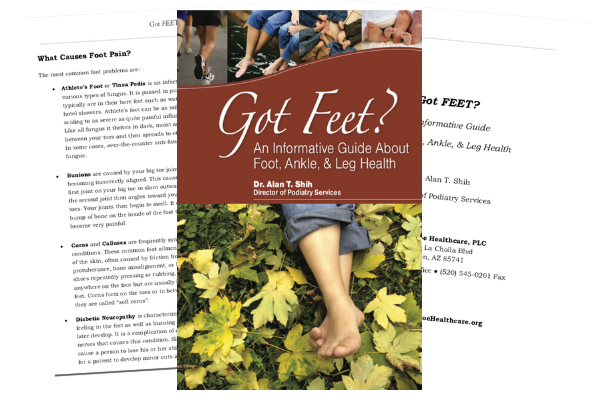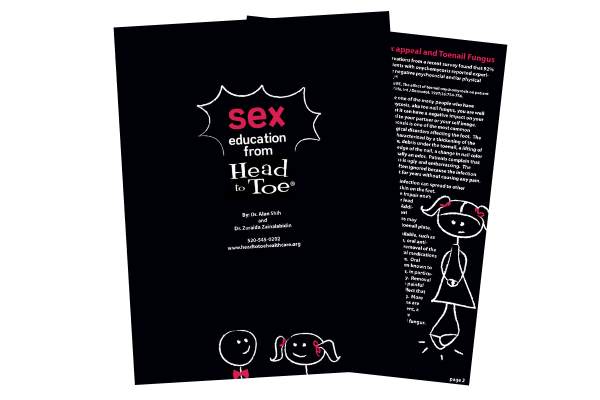Specialty Services
Are your heels hurting? Arches aching? Balls of your feet burning? We know the feeling—we see it in our office every day. And we know that, for most people, pain is only one part (and perhaps the smaller part) of the problem. It’s not just how the pain makes you feel, but what it keeps you from doing. Traveling. Working. Walking. Playing with your kids or grandkids.
The good news is that about 80 to 90 percent of our patients find relief from conservative treatments. Often, a short-term regimen of anti-inflammatories or injections will get you “over the hump.” Orthotics may be prescribed to improve your long-term prognosis and prevent future pain.
But what about the other 10 to 20 percent? The ones whose pain just won’t go away after prescribed tried-and-true treatments?
We can help
People who fall into this stage of chronic pain are often left with two equally unappealing choices—or so they’ve been told. On the one hand, they can keep popping pills indefinitely to try to keep their never-ending symptoms bearable. On the other, they can try surgery, which comes with its own risks, extensive downtime, and the very real possibility that it won’t work, either.
But it doesn’t have to be that way. And we’re not leaving you behind!
The fields of science and medicine evolve rapidly, with new innovations changing the game for doctors and patients alike almost every year. At Tucson Foot and Ankle Institute, we pride ourselves on keeping up with the latest research and technology. We want only the best possible for our patients, and when we see a new evidence-tested protocol or device that can make their lives better, we bring it home.
Below, you can learn about some of the advanced tools we’re using to help those “10 to 20 percent” of patients with chronic discomfort find permanent healing and relief, without pills or surgery.
MLS laser therapy
We’ve been offering MLS laser therapy to patients in our office for almost 10 years now, and it’s still one of the best treatment options out there for chronic pain and inflammation, particularly in soft tissues like muscles and tendons.
If you remember your high school science class, you might recall that light is a type of electromagnetic energy. That energy is why bright sunlight warms your skin. Solar panels can convert it into electrical energy to power your home; trees can convert it into chemical energy for food. You get the idea.
Well, medical scientists discovered that your body’s cells respond in a profoundly therapeutic way to certain wavelengths of light. Your cells use that energy, for example, to create more ATP, improve circulation, accelerate cellular reproduction, and draw more water, oxygen, and nutrients to the area. Laser devices can deliver that energy at power levels and frequencies that enable fast and safe healing.
Radiofrequency nerve ablation
Let’s take another trip back in time to high school science class. Here’s a good question: What is pain?
When a part of your body is damaged, the injured cells release certain chemicals (prostaglandins) that stimulate nearby sensory nerves. The nerves send electrochemical signals back to the brain, where the information is processed and interpreted as pain. (Sometimes the nerve itself is damaged or not working properly, which means you can experience pain even if there is no obvious injury.)
Many medical treatments to reduce pain, like medicines and cold therapy, are designed to temporarily disrupt this process by some means. Painkillers temporarily stop injured cells from releasing prostaglandins, for example, while cryotherapy deadens nerves in a specific area.
Radiofrequency nerve ablation (RFNA) does this in a much more targeted and long-lasting way. It is a minimally-invasive procedure that uses radiofrequency energy to selectively heat and ablate (essentially “switch off”) one or more sensory nerves that are causing pain. Unlike painkillers, the relief is generally long-lasting—typically at least 9 months, and sometimes many years. And unlike cryotherapy, it is precise enough to distinguish sensory nerves from motor nerves, meaning that your muscle function will not be affected as a side effect.
RFNA is particularly effective for painful conditions such as plantar fasciitis and Morton’s neuroma.
Custom orthotics
Have you been suffering from foot pain, high arches or flat feet most of your life, but thought you couldn’t do anything about it? Think again.
The majority of foot problems are related to skeletal imbalance, which can put undue stress on the feet. This leads to pain in the ankles, legs, knees, hips, and back. Does this sound familiar? If so, orthotics might be the answer for you. Orthotics is simply the use of custom-made foot supports that are worn under the heel and the arch of the foot. These clever devices help to realign your foot, which can give you better knee, hip, and back alignment, taking the strain off your feet.
Other innovative treatment options
While MLS laser and RFNA are two of the most exciting options, they are far from the only advanced procedures we offer. There are several other effective options that may be appropriate for certain types of injuries and pain, or for healing quickly after a surgical procedure. These include:
AmnioMatrix. The amniotic membrane which surrounds a baby during pregnancy is loaded with collagen, growth factors, and other essential proteins and nutrients vital to cellular nourishment and healing. It is also designed specifically to be a “universal transplant” that will be accepted by mom’s immune system, protecting the developing child.
Normally this amniotic tissue is simply discarded after birth. However, the unique properties of amniotic and placental tissue make it highly effective as an injectable treatment for pain and injury healing.
The AmnioMatrix injection is made from amniotic tissue from suitable donors who have given their full consent. Only tissue from live births delivered by elective Cesarean section are eligible to be donated, and donating mothers must pass social, physical, and medical screenings to confirm suitability.
We commonly use AmnioMatrix to address pain in the heel, Achilles tendon pains, ankle and foot arthritis, and various soft tissue injuries.
Platelet-rich plasma (PRP). Sports fans have probably heard about the wonders of PRP. This treatment is popular with athletes looking to get off the disabled list and return to action as quickly as possible.
We take a small sample of your blood and spin it at high velocity to separate out the individual components and recombine a mixture with a high concentration of platelets. These tiny particles are best known for their role in forming blood clots, but they’re also packed with proteins (growth factors) your body uses to heal and repair damaged tissue. By re-injecting this platelet-rich blood into the injury site, your body can heal more quickly.
Shockwave therapy. When cells are damaged, their outer layers (membranes) break and chemicals from inside the cell are released into the surrounding area. These chemicals act as a “signal” to healthy nearby cells, letting them know something is wrong and that they need to send help—blood, oxygen, nutrients, etc.
Shockwave therapy works by delivering mechanical pressure waves to a painful area. This creates small “microtraumas” that are not harmful to the individual, but allow the release of these signaling chemicals from cells in the painful area. This triggers a cascading healing response. Studies show a success rate over 80%. The procedure itself does not require anesthesia, won’t keep you off your feet, and won’t keep you from full activity for more than a few days.
Cutting edge pain relief in Tucson
Don’t fall into the mistake of believing your only options are get surgery or deal with indefinite, debilitation pain. Let Tucson Foot and Ankle Institute help you get your life back. To request an appointment, click here to fill out our online form, or give us a call anytime at (520) 545-0202.
Free Books
Contact Us
Office Hours:
Monday - Friday
8:00AM - 5:00PM
Tucson Foot & Ankle Institute:
7406 N. La Cholla Blvd.
Tucson, AZ 85741
Phone: (520) 545-0202
Fax: (520) 545-0201
© Tucson Foot and Ankle Institute. All Rights Reserved. | Privacy Policy


